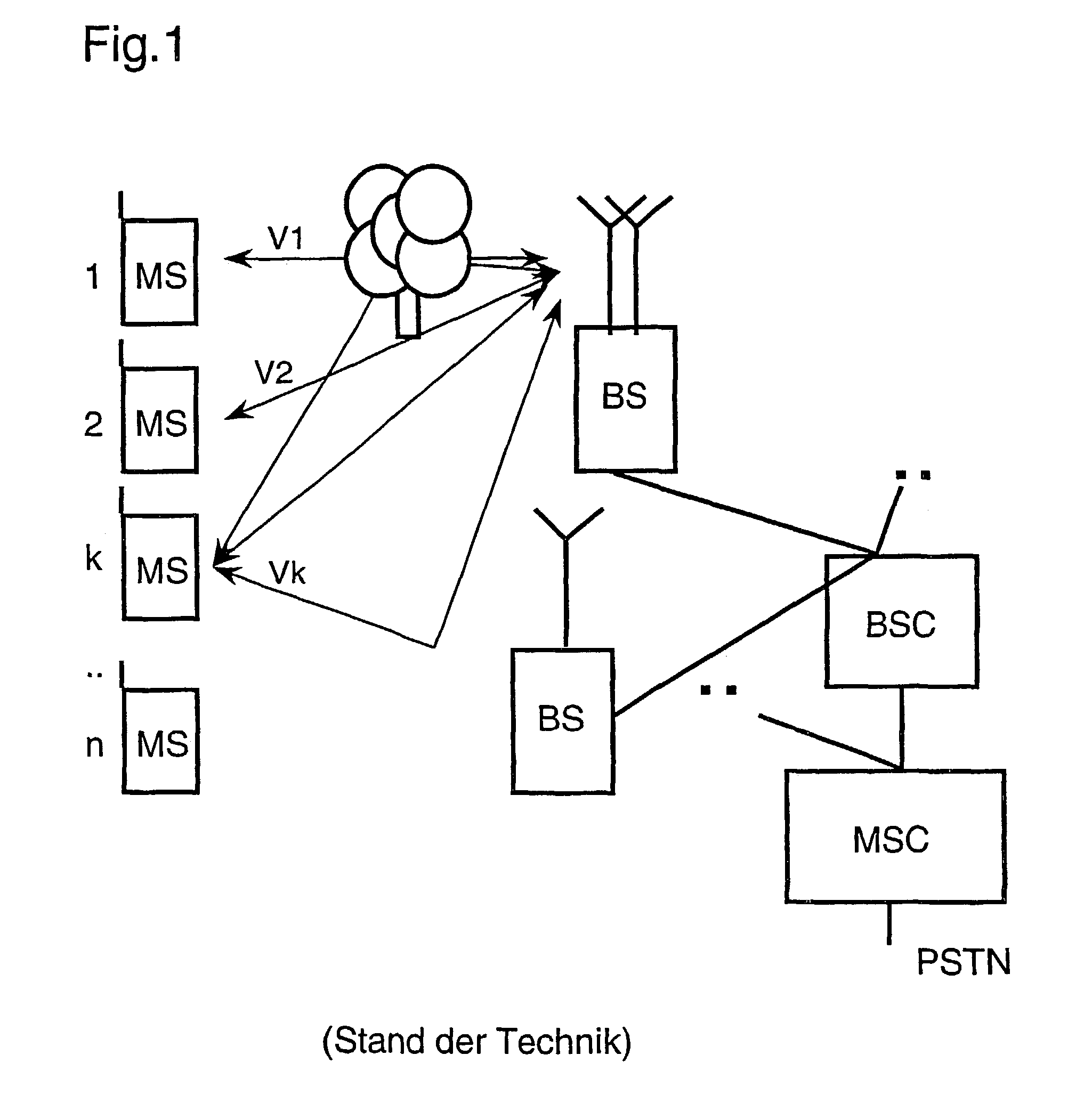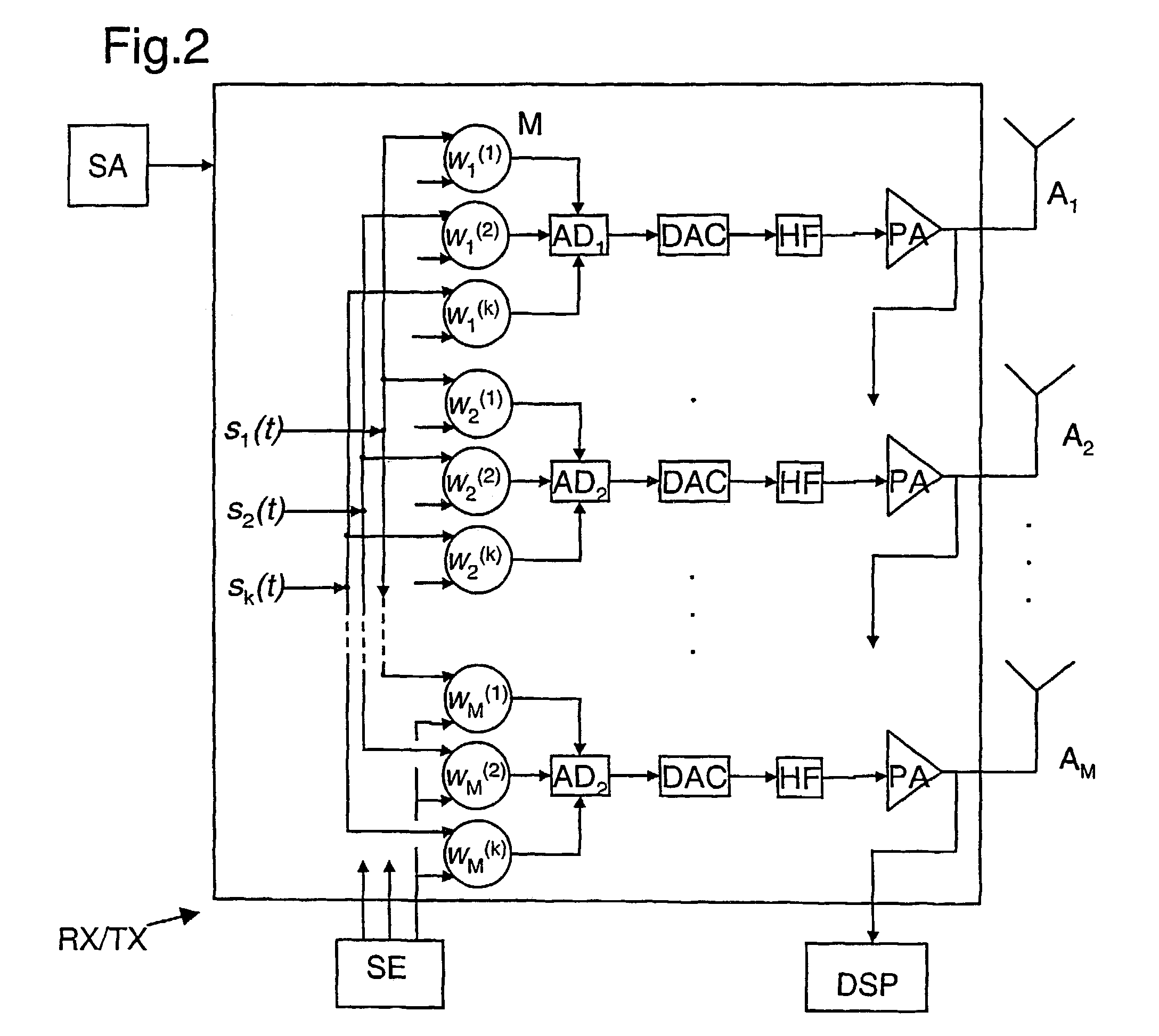Beam forming method
a beamforming and beam technology, applied in the field of beamforming methods, can solve the problems of noise disturbance, short-term cancellation effect, signal transmission using electromagnetic waves, etc., and achieve the effect of reliably avoiding mutual cancellation
- Summary
- Abstract
- Description
- Claims
- Application Information
AI Technical Summary
Benefits of technology
Problems solved by technology
Method used
Image
Examples
Embodiment Construction
[0040]Reference will now be made in detail to the preferred embodiments of the present invention, examples of which are illustrated in the accompanying drawings, wherein like reference numerals refer to like elements throughout.
[0041]FIG. 1 shows the structure of a radio communications system in which the method according to the invention can be used. This system includes a large number of mobile switching centers MSC, which are networked with one another and provide the access to a landline network PSTN. Furthermore, these mobile switching centers MSC are connected to in each case at least one base station controller BSC. Each base station controller BSC in turn allows a connection for at least one base station BS. A base station BS such as this can set up a message link to subscriber stations MS via a radio interface. At least some of the base stations BS are for this purpose equipped with antenna devices AE which have a number of antenna elements (A1–AM).
[0042]FIG. 1 shows, by wa...
PUM
 Login to View More
Login to View More Abstract
Description
Claims
Application Information
 Login to View More
Login to View More - R&D
- Intellectual Property
- Life Sciences
- Materials
- Tech Scout
- Unparalleled Data Quality
- Higher Quality Content
- 60% Fewer Hallucinations
Browse by: Latest US Patents, China's latest patents, Technical Efficacy Thesaurus, Application Domain, Technology Topic, Popular Technical Reports.
© 2025 PatSnap. All rights reserved.Legal|Privacy policy|Modern Slavery Act Transparency Statement|Sitemap|About US| Contact US: help@patsnap.com



